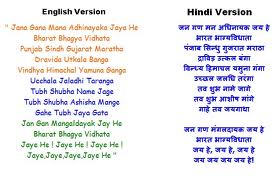NATIONAL BIRD OF INDIA:PEACOCK

PEACOCK, Pavo cristatus (Linnaeus), National Bird of India, is a colourful, bird with a
fan-shaped crest of feathers. It is symbol of qualities like beauty, grace, pride and mysticism.Peacock is a large and majestic bird. It
has got a long and beautiful tail. Both the peacock and the hen have
crest. But the crest of hen is smaller in size.The male of the species is more colourful than the female,spectacular bronze-green train of around 200 elongated feathers.These birds do not sound as beautiful as they look they have a harsh call. The significance of
peacock is attached to cultures of India, Far East, Ancient Persia,
Greek and Christian. In Hinduism, the image of the god of thunder, rains
and war, Indra, was depicted in the form of a peacock. In south India,
peacock is considered as a 'vahana' or vehilce of lord Muruga. The
figure of peacock is painted in various Islamic religious buildings. In
Christianity, the peacock was also known as the symbol of the
'Resurrection'.It is fully protected under the Indian Wildlife (Protection) Act, 1972
NATIONAL ANIMAL OF INDIA:TIGER
Tiger is our national animal. Its total may be upto 4 meters [13ft] and
weight upto 300 kg [660pounds]. It is the family member of cats and is
also known as ‘big cat’. Its body pattern is black vertical strips which
overlaps on white-orange fur. They are carnivores animals. There are
many kinds of tigers like white tiger, golden tabby tigers…etc. They
live in territorial habitat. It will always be close to water and plenty
of prey. Tigers are strong at swimming. They often bath in ponds,
lakes, and rivers. Cats avoid water but, tigers like it. It is the
vehicle of Durga
NATIONAL FLAG OF INDIA
After independence instead of spinning wheel, ashoka chakra was
replaced. The chakraOur national flag is rectangular in shape .It has 3
horizontal columns, each has 3 different colours. That is why it is
called tiranga or tricolour. At top it is saffron, middle it is
white and bottom it is green. Saffron stands for spirit and sacrifice.
White stands for peace and truth. Green stands for growth and in centre
ashoka chakra stands for peace and love. The national flag is hoisted on all important buildings on any national festival. It is a rule that we should respect our national flag and not let it
down. We should be ready to give our lives for our country.
NATIONAL TREE: BANYAN TREE
BANYAN, the National fig tree of India also known as Ficus bengalensis grow over a large area. The roots then give rise to more trunks and branches. Because of this characteristic & longevity, the Banyan tree is considered immortal & sacred and is an integral part of the myths and legends in India. Even today, the banyan tree is the focal point of village life and the village council meetings under the shade of this huge shade-giving tree.
NATIONAL GAME:HOCKEY
Hockey, in which India has an impressive record with eight Olympic gold medals, is officially the national sport. The Golden Era of hockey in India was the period from 1928 - 1956 when India won 6 consecutive gold medals in the Olympics. During the Golden Era, India played 24 Olympic matches, won all 24, scored 178 goals (at an average of 7.43 goals per match) and conceded only 7 goals. The two other gold medals for India came in the 1964 Tokyo Olympics and the 1980 Moscow Olympics.
NATIONAL FLOWER:LOTUS
Lotus scientifically known as Nelumbunucifera is the national flower of India. It is also a symbol of triumple,since the lotus is rooted in the mud and can survive to regerminate for thousand of years. untouched by the impurity,lotus symbolises the purity of the mind and heart.It even symbolises divinity, fertility, wealth, knowledge and not tO forgetenlightenment.The leaves and flowers of lotus float and have long stem that contains air spaces in them.
NATIONAL FRUIT:MANGO
The Mango is the national fruit. It has been cultivated in India since time immemorial. There are over 100 varieties of mangos in India, in a range of colors, sizes, and shapes. Common in the tropical part of the world, mangos are savored for their sweet juice and bright colors. People in India eat mangos ripe, or prepare them green as pickles or chutneys. They are rich in vitamin A, C, and D.
NATIONAL ANTHEM: JANA GANA MANA







No comments:
Post a Comment